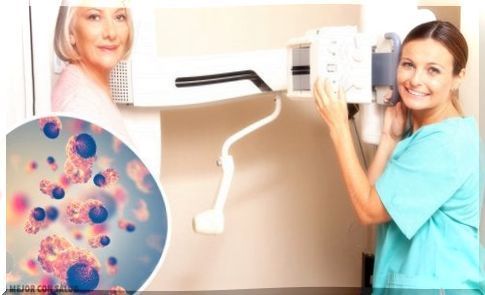What Is The HER-2 Receiver?
When a patient makes a pathological report, it must include information on the status of the HER-2 receptor or human epidermal growth factor receptor 2, since this information informs whether said gene influences the formation of cancer.
Genes contain the formulas for the various proteins that a cell needs to stay healthy and function normally. Some genes and the proteins they produce can influence the behavior of breast cancer.
In this way, cancer cells in a tissue sample are analyzed using a biopsy or other techniques to see which genes are normal and which genes are altered. The proteins produced by cells can also be analyzed.
Breast cancer overview

Breast cancer is a type of cancer that forms in the cells of the breast. It can develop in both men and women. However, women are much more likely to suffer from this disease, as detailed in a Mayo Clinic article.
In Spain, 1 in 8 women suffers from breast cancer; It is the cancer with the highest incidence in women in this country, according to a report by the Spanish Society of Medical Oncology (SEOM). The number of women who suffer from it has increased after the introduction of mammography in early diagnosis programs and continues to increase due to the aging of the population.
This cancer develops from the uncontrolled growth of cells in the breast. The tumor can appear in different structures of this organ, for example in the ducts. When proliferation occurs, certain proteins and molecules are more numerous, such as HER-2 or the proliferation marker KI67.
In addition, there are certain risk factors that greatly increase the probability of suffering from this disease. Among them, we can mention:
- Genetic predisposition: according to the SEOM article cited above, between 5 and 10% of breast cancers in Spain are hereditary.
- History of atypical hyperplasia.
- Not having children or having them at an older age.
- Exposure to estrogens.
- Radiation.
- Sedentary lifestyle.
- Diet: according to a study published by the journal Healthcare , the Mediterranean diet reduces the risk of breast cancer. This is due to their preference for fruits and vegetables and their intake of fatty acids such as omega 3.
HER-2 receiver: what is it about?
HER-2 proteins are receptors on breast cells, produced by the HER-2 gene. As detailed in an article by the American Cancer Society, in normal situations, these receptors are necessary for the breast to grow healthy, for breast cells to divide and to repair themselves.
However, the SEOM states that in between 15 and 20% of cases of this cancer, the gene that encodes the HER-2 receptor proteins does not work properly and makes many copies of itself. This phenomenon is known as HER-2 gene amplification.
In this way, all the extra copies of this gene send the information so that more HER-2 receptors are synthesized, which end up being overexpressed. As a result, cells in the breast grow and divide uncontrollably, leading to cancer.
HER-2 + or HER-2 – breast cancer

Depending on whether or not this gene is amplified, breast cancer can be classified into :
- HER-2 positive: these are cases of breast cancer with amplification of the HER-2 gene or overexpression of this protein.
- HER-2 negative: occurs when the cancer does not present or overexpression of the HER-2 gene or protein.
In general, HER-2 positive cancer has a poor prognosis because it tends to grow faster and is more likely to spread and re-form.
However, new advances in research have allowed the development of new antiHER-2 drugs that have provided great results. An example of these drugs is trastuzumab, supported by a study published in the journal Oncology .
Determination of the HER-2 receptor in patients with breast cancer
According to what is detailed in an investigation published by Breast Cancer Research , today there are 4 clinical tests that allow us to analyze the presence of this receptor :
- Immunohistochemistry or IHC : This test indicates if there is too much HER-2 protein in cancer cells. The results are expressed as follows: 0 (negative), 1+ (negative), 2+ (ambiguous), or 3+ (positive).
- FISH or fluorescent in situ hybridization analysis : The results of this test let you know if there are too many copies of the HER-2 gene in the affected cells.
- CISH or HER-2 analysis by chromogenic in situ hybridization with subtraction probe technology : as above, shows if there are too many copies of the HER-2 gene.
- ISH or HER-2 analysis by in situ hybridization : shows the same data as the previous two.
Early detection of breast cancer is key
Fortunately, much progress has been made in early detection of breast cancer, which is critical, as well as its treatment. As the disease and how to treat it are now better understood, deaths associated with it are declining more and more.
In this sense, it is vitally important to remain alert to any symptoms that may appear. In addition, techniques such as breast self-examination and regular check-ups with the doctor can help diagnose this disease early.









